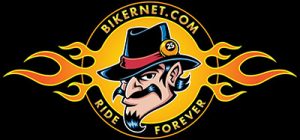
In the case of this rare V-twin we stumble across a document written to motorcycle collector and boss of Sierra Madre Motorcycles, a restoration plant, Don Whalen. We were able to yank the soild document from his tight fist as we listened to his Merkel history lesson. The letter was written by former owner Doug McKenzie:

The early history isn't available but there was a Flying Merkel dealer in Adalaide, Australia back in the teen, and this bike could very well have been purchased through that dealership.

The earliest owner that we know of was Harold Rosenhain who purchased the bike in Port Adalaide by posting an advertisement seaking old motorcycles. He sold the Merkel to Eric Rainsford, I believe in 1972. Mr Rainsford was a respected industrialist with a substantial automotive and motorcycle collection. According to Mr. Rainsford, the Merkel looked much as it does today when he acquired it. He said that the repaint looked 20-30 years old when he purchased it. I have always estimated that the paint was applied in the early 1950s from his description.

Mr. Rainsford loand the Merkel to the National Motor Museum in Australia, on December 13, `977 with eight other bikes. It was on display until I purchased it in December of 1999. This was my first motorcycle and I can proudly say that I learned to ride on a 1913 Flying Merkel.

Since I have owned the Merkel, the only repaint was the area inside the pinstripe of the tank. This was sa correct decal could be applied. Various parts have been plated, new pedals installed, the bushing where the two halves of the frame pivot was wornj-out so a new one was fabricated. A new rear sprocket was fabricated. The Musselman hub was rebuilt, as was the external rear brake. The California registration badge was purchased on e-bay for a couple hundred dollars and installed to cover up some random holes in the fender.

I have enclosed all the correspondence from the National Motor Museum and from Mr. Rainsford to support this history. I have also included the Hemmings ad that changed my life. Also included is the paperwork that I received from Mr. Rainsford regarding the export of the bike. It includes a Bill of Lading, Shipping information, bill of sale, a cultural heritage certificate and letters from the museum documenting Mr. Rainsford's ownership.–Doug McKenzie

There were over 140 motorcycle manufactures during the early 1900s in the U.S. Don has 67 of these manufacturers represented in the Bunch Museum in San Jose, but I bet you'd like to know the story behind the Hemmings Ad that changed Mr. McKenzie's life.

The ad ran with an incorrect number, but the Australian operator was extremely cooperative and help him find the correct museum listing. Consequently when he reached museum, they had never received another call on the ad, and they were very anxious to sell the bike. Mr. McKenzie received a tremendous deal–the score of a lifetime.


Here's the history direct from the Flying Merkel site: “The Merkel” brand first appeared in Milwaukee Wisconsin in 1902 when Joseph Merkel set-up shop producing single cylinder motorcycles. Merkel was among the most innovative of the pioneer motorcycle companies. By 1905 Merkel had decided to engage in competition, and produced several racing machines. Merkel's motorcycles ultimately set many performance standards during the emerging American racing scene. These machines and their riders enabled Merkel to develop a patented spring front fork that was to become the forerunner of the modern telescopic front fork. This fork became the instrument of choice on racing machines of other builders.

Also developed was the monoshock rear suspension, a system used today on modern motorcycles. Merkel's slogan became: “All roads are smooth to The Flying Merkel.” Merkel also used ball bearings as opposed to bronze bushings in the engine. In contrast to primitive atmospheric pressure intake valves, Merkel designed a cam-actuated mechanism. Merkel also pioneered a throttle-controlled engine oiler that long preceded Harley's and Indian's use of such a device.

The company was purchased in 1909 by the Light Manufacturing Company, and was moved in its entirety to Pottstown Pennsylvania, producing machines with the “Merkel Light” and subsequently “The Flying Merkel” names. Joseph Merkel began immediately experimenting with frame and suspension improvements, and new engine designs.

A young test rider by the name of Maldwyn Jones rode one of Merkel's creations. An inventive mechanic and racer, Jones set up the bike and defeated the reigning champion Erwin G (Cannonball) Baker in a ten mile race. The following season, Jones turned professional and won three of four races on a machine bearing “The Flying Merkel” logo on the tank. Jones went on to become a national champion racer and helped Merkel achieve recognition among performance enthusiasts.

In 1911 the Miami Cycle Manufacturing Company purchased Merkel, and production was moved to Middletown Ohio. The Miami Company, organized in 1895, was building bicycles and Motorcycles using names best known as Raycycle, and Miami. The Merkel acquisition gave Miami the high-end product that it needed to be regarded as a premiere manufacturer. The factory racing team by then expanded to include such names as LS Taylor, FE French, CF Pinneau, and W Wikel.

In 1914 The flying Merkel won the National endurance run from Chicago to St Louis. Maldwyn Jones then broke a world's record on the Vanderbilt Course. When he returned to Middletown he was given a hero's welcome.

Engineering innovation, high quality, and racing successes were not enough to sustain this progressive endeavor. The onset of war and, a contracting market, and increased competition caused production of The Flying Merkel to falter. The final Merkel machines were produced in 1917.

It's fascinating how so many companies grew and developed machines, then died to never return. Even today we have only a handful of motorcycle manufacturers in the U.S. Yet the population has passed 200 million. Just goes to show anything is possible.
–Wilburn Roach

